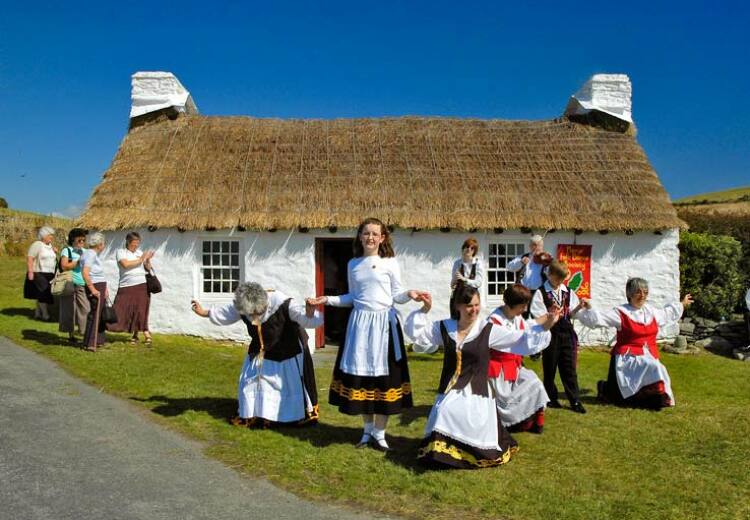River quality monitoring by the Government Laboratory’s Freshwater Biologist confirms 92% of Manx rivers are good or better chemical quality and 72% are good or better biological water quality. These figures compare favourably with England, where, although the same as us for biological quality, only 76% of rivers show good or better chemical quality . Rivers that are of good and better quality are those in an almost perfect, healthy state, with little or no pollution.
Biological water quality is checked by sampling the types of freshwater snails, insect larvae and shrimps found in rivers, revealing long term effects of pollution. Chemical water quality is checked by measuring factors related to sewage and farm waste, such as dissolved oxygen and ammonia, and shows pollution at the time of sampling. This vital background work enables the identification of one-off pollution incidents and also any gradual change in river water quality which may occur over months or years. The information is used by other parts of the Department to inform on the effectiveness of pollution control measures and focus any need for action. It also supports the work of other parts of Government concerned with promoting healthy fisheries.
Whilst the overall good quality of river water on the Island is pleasing, there is no room for complacency: Lab tests show that although biological quality remains at the same high level of previous years, at the ‘bottom’ end of the scale there has been a slight increase in rivers experiencing poor chemical quality in 2008, with 3% of rivers showing poor quality compared to 1% previously. This means that there are a few more river sites suffering from too much organic waste polluting their systems. Although this is a deterioration, the proportion is still small and again compares favourably with England where the figure is over 4%. Only 1% of our rivers have poor biological quality, compared to nearly 6% in England, showing we have only a very few sites where animals sensitive to pollution cannot live.
The slight worsening of chemical river water quality has two likely causes. The first is the increased leaching and run-off from the land into rivers, due to frequent bouts of intense prolonged rainfall throughout the past couple of years – indeed the same effect has been noted by U.K. the Environment Agency. The second is associated with economic development, due to development of land for housing or other purposes and increasing density of population increasing the potential for pollution. While some of these causes cannot be controlled, good working practices and due care by both developers and landowners can help to minimise the adverse effects on the environment.
Good river water quality is essential for fish and other wildlife and contributes significantly to the Island’s overall image as a clean environment. Any significant deterioration in quality would harm both of these, as well as resulting in more complaints about smelly, discoloured rivers, and an increased risk to the health of people working or children playing in or beside them.
DLGE summarises that our rivers are high quality but are also under pressure and need continuous care and vigilance by businesses and the public to prevent pollution, and constant monitoring to detect pollution and identify polluters. Long term monitoring reveals trends and allows for planned improvements to the Island’s water courses and river banks, which lessens the chance of pollution damage.
The Government Laboratory’s Freshwater Biologist monitors quality at over 80 sites throughout the year and this assists the Environmental Protection Unit (EPU) to identify polluters and solve many pollution problems. A number of long term pollution problems have been successfully dealt with by the Department of Local Government and the Environment and these rivers are either now already fully recovered or starting to recover. It can be expected that these improvements will be reflected in future water quality figures.








